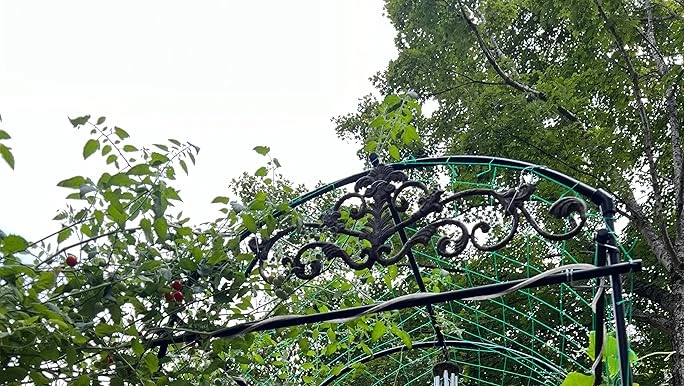Dec . 23, 2024 22:30 Back to list
Creating a Durable Wire Mesh Fence for Effective Property Protection
Building Wire Mesh Fence A Comprehensive Guide
Wire mesh fencing is a practical and versatile solution for numerous applications, ranging from residential properties to commercial installations and agricultural settings. This type of fencing is particularly favored for its durability, cost-effectiveness, and ease of installation. In this article, we will explore the key aspects of building a wire mesh fence, including its benefits, applications, materials, installation process, and maintenance tips.
Benefits of Wire Mesh Fencing
One of the most significant advantages of wire mesh fencing is its strength and durability. Made from high-quality steel, wire mesh fences are capable of withstanding harsh weather conditions and potential impacts. This resilience makes them an excellent option for securing areas that require a robust barrier.
Additionally, wire mesh fencing is relatively economical compared to other fencing materials like wood or vinyl. It offers a high level of security without breaking the bank, which is why it is often chosen for large properties or projects on a tight budget.
Another benefit is the visibility that wire mesh fencing provides. Unlike solid fences, which can obscure views, wire mesh allows for transparency. This quality is advantageous for both security and aesthetic purposes; it lets homeowners keep an eye on their property while still providing enough of a barrier to deter intruders.
Applications of Wire Mesh Fencing
Wire mesh fencing is versatile and can be used in various settings. In residential areas, it is commonly used for enclosing gardens, pools, and backyards to contain pets and children safely. This type of fencing can also serve as a decorative element, especially when combined with climbing plants.
In commercial applications, wire mesh fencing is frequently employed to protect construction sites and storage areas. It provides a clear boundary while still allowing visibility to deter theft or vandalism.
Agricultural settings also benefit significantly from wire mesh fencing. It is commonly used to create enclosures for livestock, protect crops from wildlife, and guard perimeters around farms. The adaptability of wire mesh makes it ideal for a range of agricultural needs.
Materials Used for Wire Mesh Fencing
Wire mesh fencing comes in various materials, with galvanized steel being the most common choice due to its resistance to rust and corrosion. Other materials might include stainless steel or coated wire for added protection. The gauge of the wire is also an important factor—thicker wire offers more strength and durability, while thinner wire is more affordable but may not provide the same level of security.
building wire mesh fence

In addition to the wire material, the type of mesh pattern can vary. Common patterns include square, rectangular, and hexagonal. The choice of pattern often depends on the specific application and the level of visibility desired.
Installation Process
Building a wire mesh fence involves a straightforward installation process, making it accessible even for DIY enthusiasts. Here are the general steps to follow
1. Planning and Measurement Begin by determining the fence line and measuring the total length required. Ensure you check local regulations regarding fencing height and placement.
2. Gathering Materials Collect all necessary materials, including wire mesh rolls, posts (wooden or metal), concrete (for securing posts), and hardware like staples or clips.
3. Setting the Posts Dig holes for the posts, keeping them evenly spaced according to the height of the fence and local building codes. Set the posts in concrete for stability.
4. Attaching the Wire Mesh Once the posts are securely in place, roll out the wire mesh along the fence line. Attach the mesh to the posts using staples, clips, or wire ties, ensuring it is taut and evenly placed.
5. Finishing Touches Trim any excess mesh and secure the ends. You may also want to add a finish coat to the posts or apply rust-resistant paint for added longevity.
Maintenance Tips
While wire mesh fencing is low maintenance, occasional checks and repairs are essential to ensure its longevity. Regularly inspect the fence for any signs of wear, rust, or damage, and promptly replace any compromised sections. Keep vegetation trimmed along the fence line to prevent overgrowth that could weaken the structure.
In conclusion, building a wire mesh fence is an excellent investment for anyone seeking a practical, secure, and aesthetically pleasing boundary. With its numerous applications, cost-effectiveness, and manageable installation process, wire mesh fencing remains a popular choice for homeowners, businesses, and agricultural operations alike. Whether you're enclosing your property or securing livestock, mastering the art of wire mesh fencing can yield satisfying results for years to come.
-
Reinforcing Mesh: Core Material of the Construction Industry
NewsJul.07,2025
-
Welded Wire Fabric Reinvented for Modern Projects
NewsJul.04,2025
-
Superiority of Stainless Steel Woven Mesh
NewsJul.04,2025
-
Key Types of Razor Wire and Their Applications
NewsJul.04,2025
-
Durable Metal Fence Types for Security
NewsJul.04,2025
-
Best Materials for Livestock Fence
NewsJul.04,2025
products.







